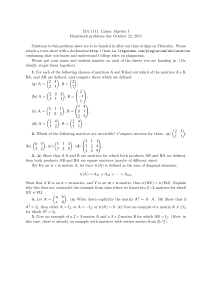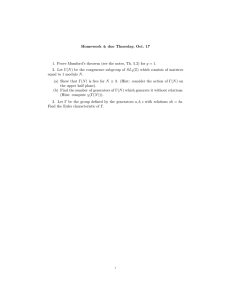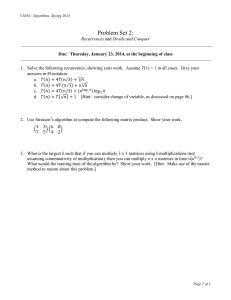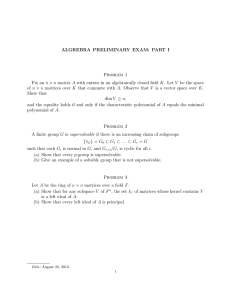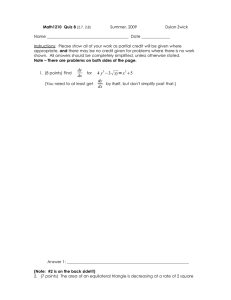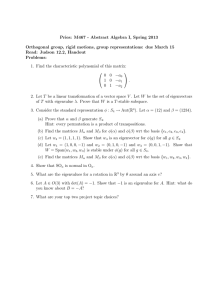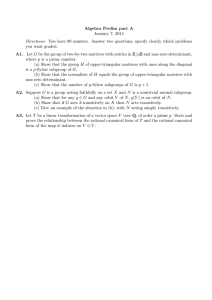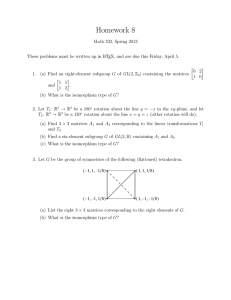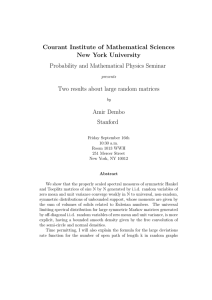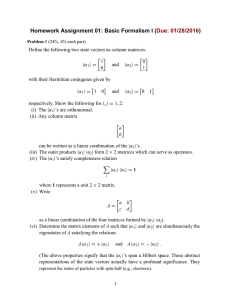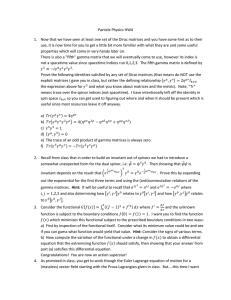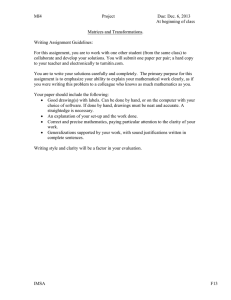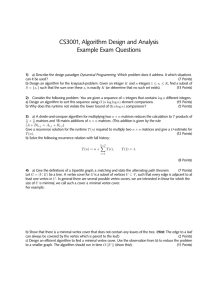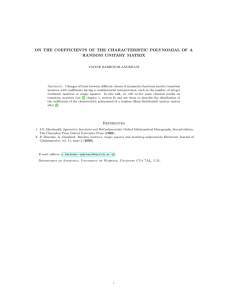Problem session exercises the formula
advertisement
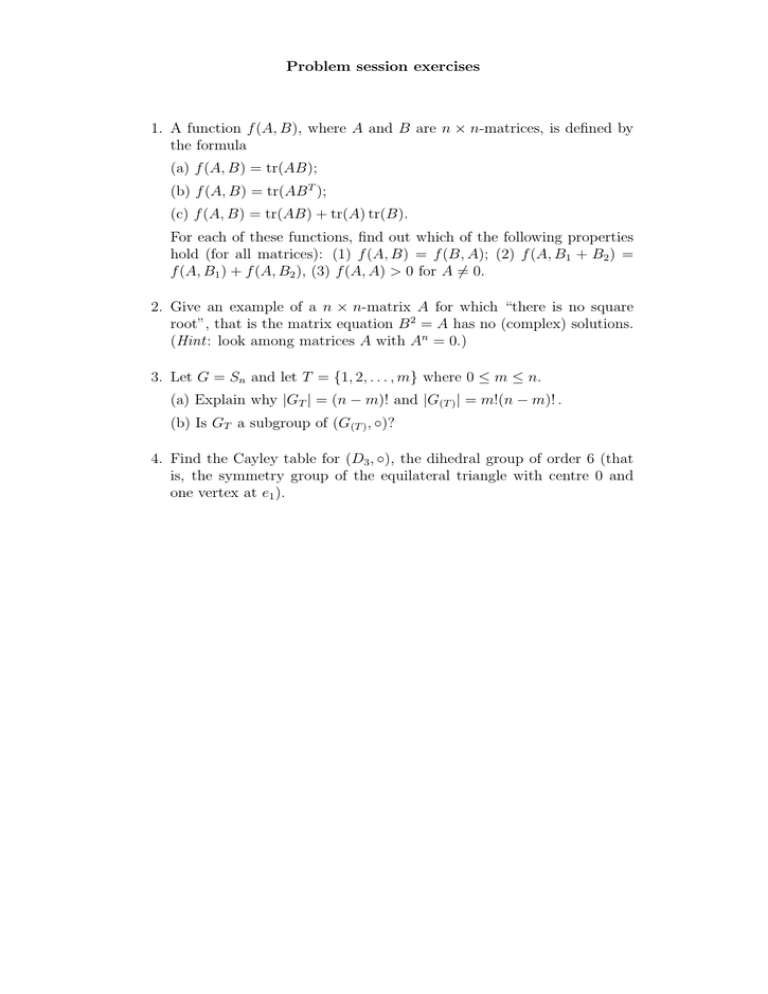
Problem session exercises
1. A function f (A, B), where A and B are n × n-matrices, is defined by
the formula
(a) f (A, B) = tr(AB);
(b) f (A, B) = tr(AB T );
(c) f (A, B) = tr(AB) + tr(A) tr(B).
For each of these functions, find out which of the following properties
hold (for all matrices): (1) f (A, B) = f (B, A); (2) f (A, B1 + B2 ) =
f (A, B1 ) + f (A, B2 ), (3) f (A, A) > 0 for A 6= 0.
2. Give an example of a n × n-matrix A for which “there is no square
root”, that is the matrix equation B 2 = A has no (complex) solutions.
(Hint: look among matrices A with An = 0.)
3. Let G = Sn and let T = {1, 2, . . . , m} where 0 ≤ m ≤ n.
(a) Explain why |GT | = (n − m)! and |G(T ) | = m!(n − m)! .
(b) Is GT a subgroup of (G(T ) , ◦)?
4. Find the Cayley table for (D3 , ◦), the dihedral group of order 6 (that
is, the symmetry group of the equilateral triangle with centre 0 and
one vertex at e1 ).
